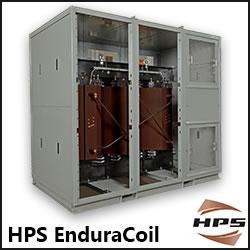New study shows biodiversity has no significant impact on switchgrass and prairie grass production for bioenergy use
"Understanding how to establish and manage grasslands that can provide more than biomass is an important challenge for developing sustainable, production-scale bioenergy plantings.”
HICKORY CORNERS, Mich. - A new study conducted at the Michigan State University W.K. Kellogg Biological Station (KBS) has revealed that species diversity has no substantial impact on production of switchgrass and prairie grass, two grasses that are being evaluated for cellulosic bioenergy production.
A paper on the project, co-authored by Kay Gross, a professor in the MSU Department of Plant Biology and the director of KBS, and Timothy Dickson, an assistant professor at the University of Nebraska-Omaha, was published in September in PLoS One.
The project was developed to test findings from experimental biodiversity and productivity studies, which commonly find a positive correlation between the number of plant species and biomass produced. Gross said that there are distinct challenges to applying these findings to bioenergy plantings, however.
"A number of things will constrain how well results from biodiversity experiments will translate to large-scale agriculture," Gross said. "Typically, the experimental studies use high seeding rates and involve hand weeding, two things you wont find in large agricultural operations. Growers are worried about cost when managing their crops, so theyre going to seed as little as possible."
The two studies reported in the paper compared how the number of species related to biomass production in switchgrass and prairie grass plantings. One study compared switchgrass and prairie fields planted for conservation and other purposes. The other was a field experiment in which switchgrass was grown alone and in combination with various prairie species. In both studies, the team found that there was no relationship between the amount of biomass produced and the number of species.
"What weve seen is that you can get high biomass production using inexpensive seed but not much diversity," Gross said. "But bioenergy plantings have the potential to provide a number of ecosystem services besides biomass production. For example, diverse bioenergy plantings may provide habitat for pollinators or other beneficial insects, as well as high biomass. Understanding how to establish and manage grasslands that can provide more than biomass is an important challenge for developing sustainable, production-scale bioenergy plantings."
The study was funded by the Department of Energy Great Lakes Bioenergy Research Center, the Department of Energy Office of Energy Efficiency and Renewable Energy, the National Science Foundations Long Term Ecological Research program, the University of Nebraska-Omaha and Michigan State University.
Featured Product

HPS EnduraCoilTM Cast Resin Medium Voltage Transformer
HPS EnduraCoil is a high-performance cast resin transformer designed for many demanding and diverse applications while minimizing both installation and maintenance costs. Coils are formed with mineral-filled epoxy, reinforced with fiberglass and cast to provide complete void-free resin impregnation throughout the entire insulation system. HPS EnduraCoil complies with the new NRCan 2019 and DOE 2016 efficiency regulations and is approved by both UL and CSA standards. It is also seismic qualified per IBC 2012/ASCE 7-10/CBC 2013. Cast resin transformers are self-extinguishing in the unlikely event of fire, environmentally friendly and offer greater resistance to short circuits. HPS also offers wide range of accessories for transformer protection and monitoring requirements.
